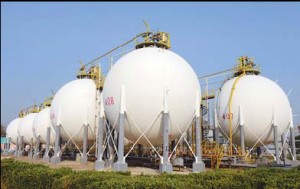 Natural gas swung between gains and losses on Wednesday as market participants weighed short-term weather forecasts calling for mostly warmer-than-usual US weather against expectations for additional much larger-than-average nationwide inventory builds.
Natural gas swung between gains and losses on Wednesday as market participants weighed short-term weather forecasts calling for mostly warmer-than-usual US weather against expectations for additional much larger-than-average nationwide inventory builds.
On the New York Mercantile Exchange, natural gas for settlement in September was down 0.93% to trade at $3.841 per million British thermal units at 9:04 GMT. Prices held in a daily range between $3.888 and $3.838 per mBtu. The contract added 2.2% on Tuesday to close at $3.877 after falling to a nine-month intraday low of $3.727 on Monday.
The energy source swung between gains and losses as market players awaited another larger-than-average injection to come in for the week ended August 15th. According to a Bloomberg survey, nationwide inventories probably rose by 82 billion cubic feet (bcf), well above the five-year average gain of 48 billion bcf. NatGasWeather.com analysts expect a build of around 85 billion cubic feet. Next weeks inventory report is also projected to come in well bearish, albeit leaner than recent ones, with injections sharply exceeding average values.
Weather outlook
According to NatGasWeather.com’s August 20th – August 26th weather forecast, a large number of warmer weather systems will track across the US this week, carrying showers and thunderstorms. They will allow temperatures over the northern US to gradually rise into the upper 70s and lower 80s, boosting nationwide cooling demand to moderate compared to normal. At the same time, the southern parts of the country will remain quite hot with highs well into the 90s spreading over the Plains and Tennessee Valley. The West will also be warm but several weather systems will track through, bringing showers and cooler-than-average readings. Despite the nationwide warm-up, there will be enough weather systems carrying cooler temperatures across the US to ensure another larger-than-average build in inventories next week.
In the August 27th – September 2nd time span, NatGasWeather.com projects that a Canadian system with showers, thunderstorms and below-seasonal temperatures will pass through the central US, bringing cooling demand to lower than usual. The southern and western US will remain very warm with highs well into the upper 90s and lower 100s, driving regionally strong cooling demand.
The strong Canadian system is expected to push through the northern Rockies this weekend and enter the central US early next week. From there on it is not sure how far it will extend to the South, but preliminary forecasts call for a fairly deep push that will bring highs over the south-central US down to the 80s from this week’s 90s. If it fails to push fast into the Ohio Valley and Northeast, warmer weather will persist for several more days. Market behavior in the beginning of September will depend on how this weather pattern plays out.
According to AccuWeather.com, readings in New York will peak at 76 degrees Fahrenheit on August 24th, 6 below normal, before spiking at 92 degrees on August 28th. Chicago will see mostly seasonal weather this week with temperatures maxing out at 82 degrees on August 25th, 1 above the average, before dropping to 67 degrees on August 31st, 13 below normal.
On the West Coast, Los Angeles will reach 81 degrees on August 23rd, 4 below usual, before a following warm-up brings highs to 85-86 degrees between August 29th and September 2nd. To the South, Houston will see highs of 96 degrees between August 24th and August 26th, 4 above normal, followed by a moderate cooling to 86-88 degrees between August 31st and September 2nd.
Technical view
According to Binary Tribune’s daily analysis, September natural gas futures’ central pivot point stands at $3.857. In case the contract penetrates the first resistance level at $3.935 per million British thermal units, it will encounter next resistance at $3.992. If breached, upside movement will probably attempt to advance to $4.070 per mBtu.
If the energy source drops below its first support level at $3.800 per mBtu, it will see support at $3.722. If the second key support zone is breached, the power-station fuel’s downward movement may extend to $3.665 per mBtu.





